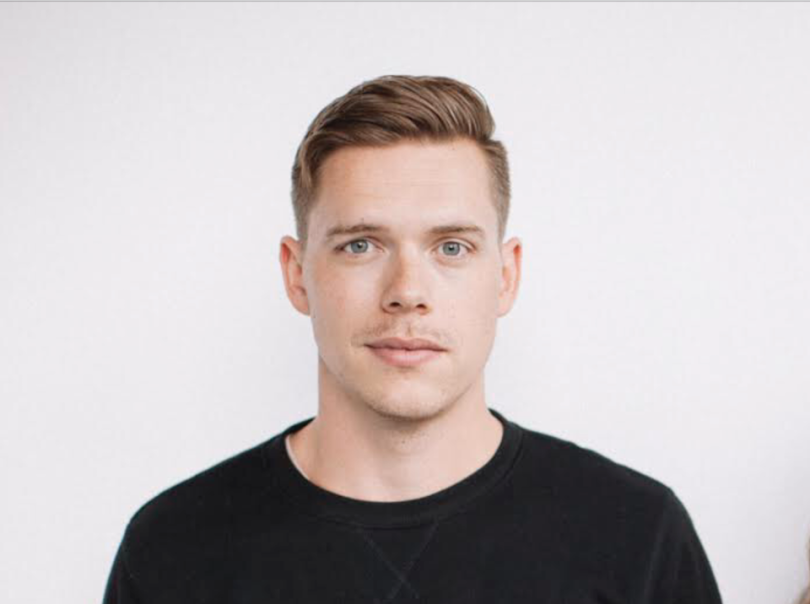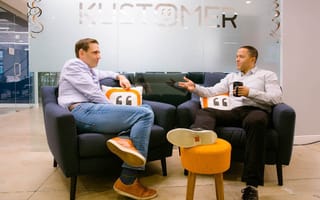As much as we may like to imagine tech’s greatest inventions as the products of magical “lightbulb” moments, the reality is far different. Driving innovation is hard work that, more often than not, takes a lot of time, teamwork, creativity and grit. For leaders looking to make an impact in their industries — and in tech as a whole — that means not only pushing themselves to their creative limits but also creating an environment in which the teams they lead feel empowered to experiment with new approaches and technology and, perhaps, even fail.
We caught up with four local tech leaders to learn how they encourage their teams to think outside the box when it comes to new products and how they’re leveraging that mentality in the projects they’re working on now.

Lifion’s human capital management platform helps organizations manage their day-to-day people operations with customizable tech tools that scale right alongside their businesses. Director of Application Development Kuntal Roy gave us a glimpse into some of the most exciting projects his team is working on at the moment and how creating an open environment — without fear of failure — has helped drive innovation.
What are the most impactful tech projects your team is working on this year?
The most impactful tech project that we are working on is Lifion SQL, a SQL-like data query engine in the Lifion platform. The idea is to provide a no-code way of defining how to model HCM data and tuning queries using a drag-and-drop interface. This leverages the common knowledge and flexibility of SQL in conjunction with the Lifion platform to provide extensions and abstractions that make common queries easy and complicated ones possible. Built natively in the Lifion platform, all policies and security constructs come out of the box, and new additions are transparent to the users as well. Additionally, it enables the Lifion platform to auto-optimize queries and enforces best practices when it comes to modeling and querying HCM data.
I think the most important way to shape an innovative culture...is by creating an environment where team members feel free to share their ideas, voice their opinions and try things out without fear of failure.”
How do you encourage your team to think outside of the box when it comes to new projects? Are there any new technologies you're eyeing for the future?
I think the most important way to shape an innovative culture and think outside of the box is by creating an environment where team members feel free to share their ideas, voice their opinions and try things out without fear of failure. The understanding that not every idea will be successful but unless we try out new ideas we will never know what we can achieve is key here. It’s also very important for teams to understand the big picture — what we are trying to achieve and why. Finally, investing in the development of team members unlocks the potential of future ideas and fosters an innovative culture.
For new technologies, we are looking into multi-model databases, which are relational with ACID guarantees; support document and graph queries; at the same time, we support active-active replication, auto-scaling and, most importantly, cloud-native.

Kustomer helps businesses deliver consistent, personalized service to their — you guessed it — customers. Its CRM platform is designed with both agents and customers in mind, providing intuitive, customizable tools that create a unified timeline of the customer’s experience across a number of digital channels. CTO and Founder Jeremy Suriel explained how his team is leveraging new technology to provide even greater flexibility and automation for users.
What are the most impactful tech projects your team is working on this year?
One of the biggest projects we’re working on involves using artificial intelligence and machine learning to provide improved self-service and to supercharge agents with tools like chatbots and suggested shortcuts and responses. We’re also working on multi-party conversation support in web and mobile SDKs and advanced CRM functionality including object- and attribute-level permissions.
Our philosophy is to leverage the best tools for the job for each service and balance that with the ability to manage the system over time.”
How do you encourage your team to think outside of the box when it comes to new projects? Are there any new technologies you're eyeing for the future?
Our philosophy is to leverage the best tools for the job for each service and balance that with the ability to manage the system over time. We also host quarterly hackathons to inspire creativity and work to create a culture of safety where people are encouraged to speak up and contribute their ideas and opinions.
In terms of new technologies we’re eyeing for the future, I’m really excited about Tensorflow as a way to power AI and machine learning models, GraphQL APIs and Golang for improved microservice concurrency and performance.

NS1 provides DNS and traffic management software and services to some of the world’s biggest digital enterprises and properties, including Salesforce, Squarespace, Pandora, Imgur, Yelp and Dropbox. Director of Engineering Thomas Spiegelman explained how incorporating software into NS1’s cloud offerings has given customers even more control over how they leverage the company’s tech tools.
What are the most impactful tech projects your team is working on this year?
We are working on the core foundation of managing the world's application traffic. We started as a SaaS model product but have worked recently to also deliver software to our customers. This enables our customers to run hybrid cloud, cloud or completely private installations of our stack.
I try to encourage my team to take time to learn new things every week and apply what they learn to implementations of our day-to-day activity.”
How do you encourage your team to think outside of the box when it comes to new projects? Are there any new technologies you're eyeing for the future?
I try to encourage my team to take time to learn new things every week and apply what they learn to implementations of our day-to-day activity. Learning can be in the form of conferences, articles or learning from fellow engineers.
We are constantly trying to remain on the cutting edge. We are investigating new hardware technologies to ever-improve our distribution (like Intel Apache Pass), and we are always excited about new container orchestration solutions like Kubernetes and Nomad.

Paperspace’s platform provides the high-performance cloud infrastructure businesses need to build, train and deploy sophisticated machine learning and artificial intelligence models. Co-Founder and CEO Dillon Erb said working in such a fast-paced field keeps his team on their toes — and constantly on the look-out for new technologies.
What are the most impactful tech projects your team is working on this year?
This year, we built a ton of new tools for developers in the ML and AI space. One of the most exciting and challenging was the launch of our GitHub app called GradientCI, which lets any developer supercharge a GitHub repo. At a high level, GradientCI is designed to make the machine learning process faster, more deterministic and easier to integrate into your existing Git-based workflow by giving you CI/CD tools.
Given that we work at the cutting edge of machine learning and AI, we are constantly evaluating and testing new technologies to see how we can accelerate the workflow for ML developers.”
How do you encourage your team to think outside of the box when it comes to new projects? Are there any new technologies you're eyeing for the future?*
Given that we work at the cutting edge of machine learning and AI (a fast-moving field), we are constantly evaluating and testing new technologies to see how we can accelerate the workflow for ML developers. In many cases, this means working to understand how work coming from the academic and research community can be used by practitioners in the field.
This year alone we added new tools for “hyperparameter optimization,” which lets you test a lot of machine learning models in parallel to find the one that performs the best and distributes ML training, which lets you spin up hundreds or thousands of machines to train a single ML experiment.
In parallel, we have also been investigating how newer API technologies like GraphQL could improve how developers interact with our tools, testing new hardware accelerators (like FPGAs) and researching newer container-based technologies like Singularity.






